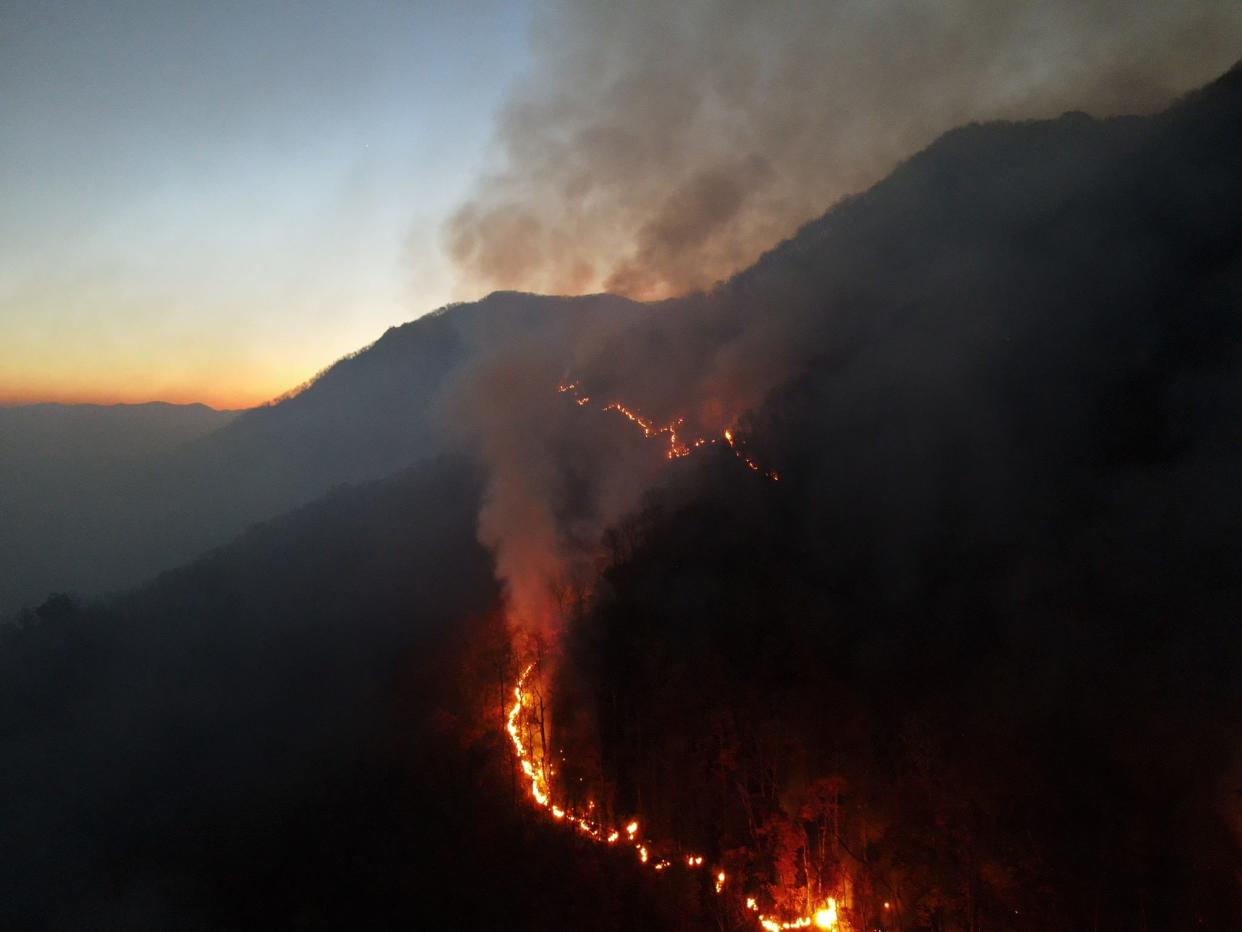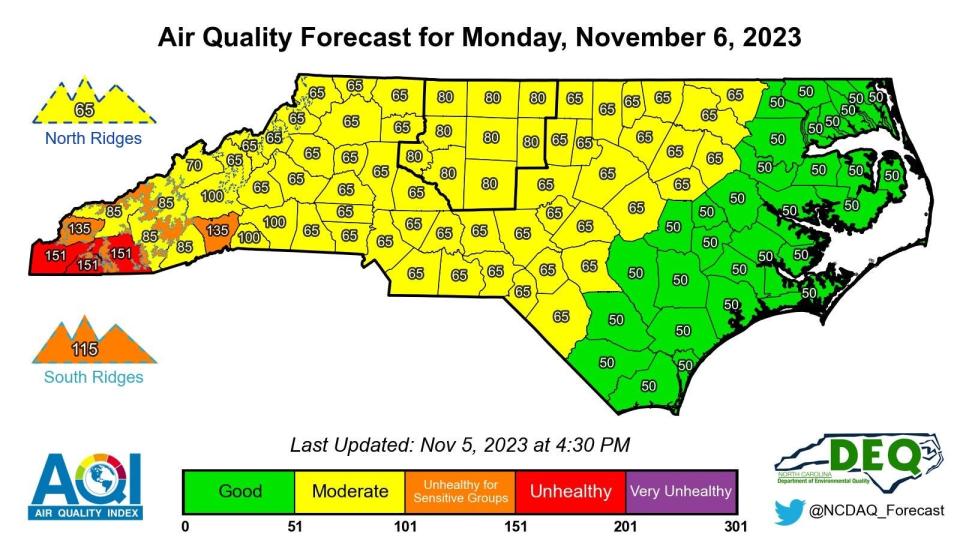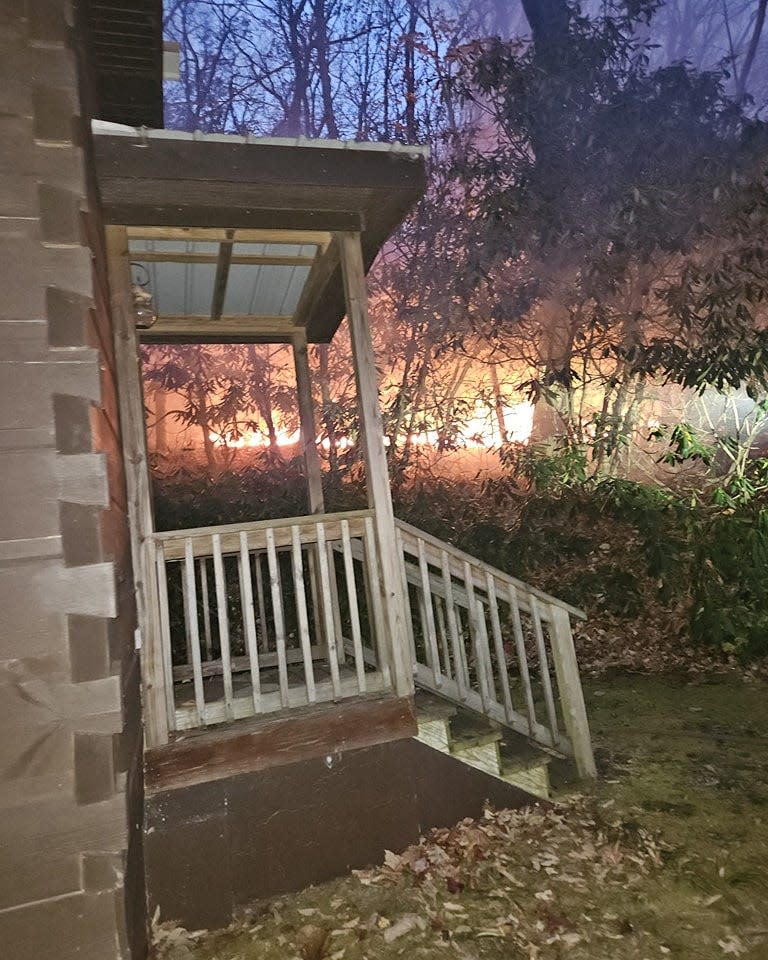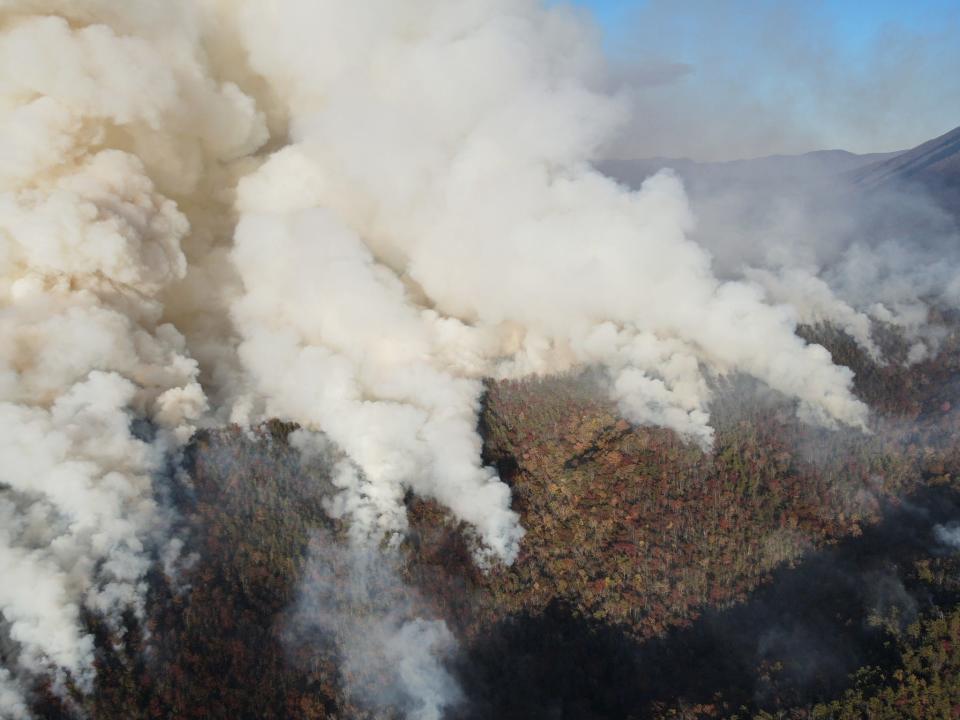Open burning banned in 14 WNC counties as fires grow, 'severe' drought continues

ASHEVILLE - While severe drought conditions persist and multiple fires continue to grow throughout the region, the N.C. Forest Service issued a ban on all open burning and canceled all burning permits for 14 counties in Western North Carolina, effective 5 p.m. Nov. 5 until further notice.
With little rain in the forecast for this week, parts of 16 different WNC counties are currently under severe drought conditions, necessitating the burn ban, as shown in an updated drought map from the U.S. Drought Monitor released Nov. 4.
“It’s going to continue to be dry through Thursday, and there’s some chance of rain on Friday,” meteorologist Doug Outlaw with the National Weather Service said. “But the rain we are expecting on Friday and Friday night is only expected to be a 10th of an inch for the Hendersonville and Asheville area, and maybe 2 10ths of an inch over in the Great Smoky Mountains.”
This year to date has been the 44th driest year in Buncombe County over the past 129 years, with the county receiving 1.74 inches less than normal from January through September, according to the National Integrated Drought Information System. For Henderson County, this year has been the 23rd driest year to date over the past 129 years, with the county receiving 8.27 inches less than normal from January through September.
More: What did hottest September on record look like for Asheville?
All open burning — which includes burning leaves, branches, or other plant material — is prohibited and no new permits will be issued while the ban is in effect, the news release from the N.C. Forest Service said. The burning of nonvegetative material, such as trash, tires or plastics, is always illegal. Any violations of the ban will result in $100 fine plus $183 in court costs, the release said.
“Several counties in WNC are currently in a severe drought, and we are seeing wildfire activity increase due to dry conditions,” Agriculture Commissioner Steve Troxler said in a news release. “Because dry conditions are expected to continue this burn ban is necessary to reduce the risk of fires starting and spreading quickly.”
Counties currently under an open burn ban include Burke, Cherokee, Clay, Cleveland, Gaston, Graham, Henderson, Jackson, Macon, McDowell, Polk, Rutherford, Swain and Transylvania. The Buncombe County Fire Marshal’s Office has also issued a ban on open burning for Buncombe County, which began at 9 a.m. Nov. 5 and will be in effect until conditions improve.
More: Open burning is banned in Buncombe County until further notice; rain not expected for days
The N.C. Forest Service’s burn ban does not apply to a fire within 100 feet of an occupied dwelling, which local government agencies have jurisdiction over, according to the release. Campfires are considered open burning, the news release specifically stated, and alternate methods of cooking food should be used while camping, such as portable gas stoves or grills.
“Even though not all areas of the North Carolina fall under the burn ban, we do encourage extreme caution with any burning as conditions are dry in many areas of the state,” Troxler said. “We will continue to assess conditions in the coming weeks to determine if we need to expand the burn ban.”
Fires burn throughout WNC
Code Orange and Code Red alerts remain in effect for southwestern North Carolina until midnight Nov. 6, as smoke from ongoing fires spread fine particulates through the air, according to the N.C. Department of Environmental Quality.

Buncombe County is under a Code Yellow alert, meaning the air quality is moderate. A “fast-moving” 1-acre brush fire ignited on Deaverview Road in West Asheville around 1 p.m. Nov. 5, prompting four homes off Westmore and more on Deaverview Road to be evacuated “for life safety reasons” by the Asheville Fire Department, spokesperson Kelley Klope told the Citizen Times. The fire was contained around 2 p.m. without injury or any major structural damage.

Henderson County currently has a Code Orange alert through Nov. 8, meaning the air is unhealthy for sensitive groups, while the Poplar Drive Fire continues to burn in the Edneyville community. The general public is not likely to be affected, but people with a respiratory disease such as Asthma, should limit prolonged exertion outside.
The fire has grown to 431 acres with 5% containment as of Nov. 6, and has destroyed two homes and an outbuilding, according to an N.C. Forest Service news release. At least 34 additional structures are threatened, and evacuation measures have been implemented by the Henderson County Emergency Management and the Henderson County Sheriff’s Office.
Macon, Clay and Cherokee counties — around where the Collett Ridge wildfire burns on thousands of acres without any containment — are under a Code Red air quality alert from the N.C. DEQ, meaning the air is unhealthy for all groups.

The wildfire in the Nantahala National Forest, which was sparked by a lightning strike on Collett Ridge Oct. 23, has grown to 2,158 acres as of Nov. 6 as 110 personnel from the U.S. Forest Service and the N.C. Forest Service continue to fight the blaze, according to an updated release from the forest service. As dry conditions continue and winds are predicted to move south, increased fire activity is expected, the release also said.
More: WNC wildfire grows: Collett Ridge fire grows to over 3 square miles, no containment
While moderate-to-severe drought conditions persist in WNC, Buncombe and other counties hit similar levels in 2022 and 2019, according to the U.S. Drought Monitor. Drought conditions have not yet reached 2016 levels, when extended drought conditions across WNC contributed to 34 wildfires that burned throughout November, eventually burning some 60,000 acres of forest. They also led to 14 deaths in Gatlinburg, Tennessee, after the Chimney Tops Fire that started in Great Smoky Mountains National Park raged outside the park's borders.
Ryley Ober is the Public Safety Reporter for Asheville Citizen Times, part of the USA Today Network. Email her at rober@gannett.com and follow her on Twitter @ryleyober
This article originally appeared on Asheville Citizen Times: Burning banned in WNC, wildfires grow, no rain forecast until Friday

